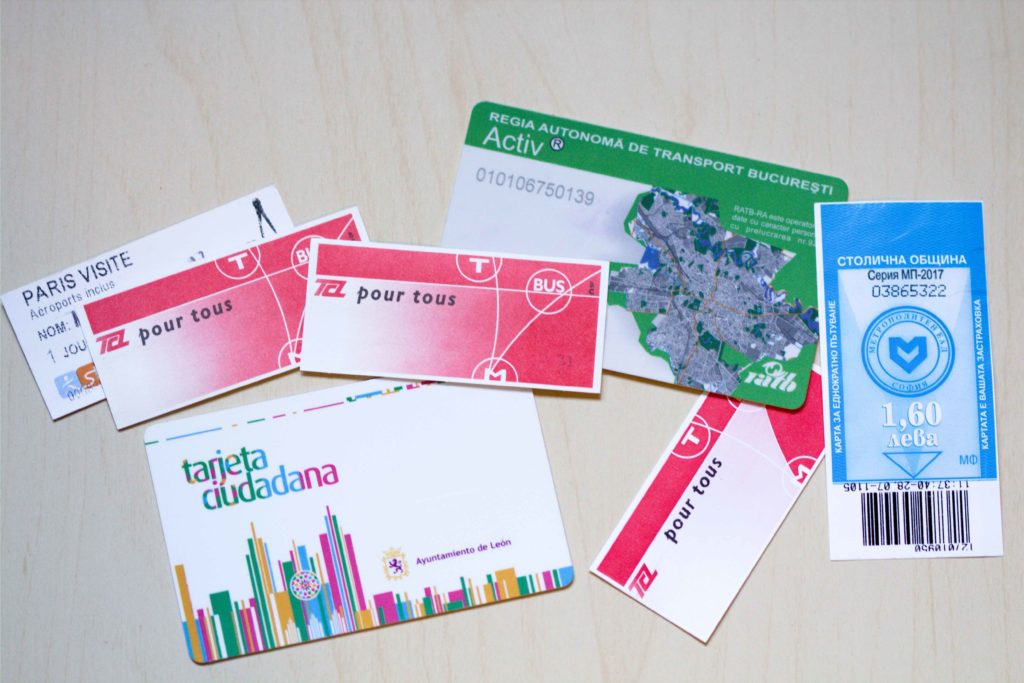This article was written in collaboration with Michelle Ambrosio.
When you’re vacationing you might be tempted to use taxis to get from place to place, but this can get expensive. Most large cities have very efficient public transportation systems. They are cheaper than taxis and can get you to most places around town. Plus, you’ll get to experience the city like a local. Here are some tips for using public transportation on your vacation.

Apps and Maps
Before arriving at your destination find out the name of the public transportation system and go to their official website to find out about the routes that you will be taking, fare cost and schedules. If there is an app, download it; this will enable you to check real time schedules and access the entire transportation system’s network. If there is no app available, don’t sweat it, there are other options to have the information at your fingertips. Find a PDF or JPEG map of the entire bus and/or metro systems and download it to your phone. You can also download individual time tables for specific lines that you will be taking, these are usually available in PDF format.
Know the Schedules
Once you’ve downloaded the routes you will be using, take time to familiarize yourself with the schedules. Not only will you be able to plan your time accordingly, like when you should be at the stop; but you will also know the frequency, first and last bus/metro. As you read the schedules, you might have to guesstimate as to when the bus/metro will arrive at your stop. For instance, a certain bus line might say it leaves every 30 minutes starting at 7:00 a.m. from the first stop, and if you’re hopping on at the fifth stop, you probably should be there around 7:15 a.m.
Offline Map
Download a map that you can use offline. This way, you won’t get lost even without an internet connection. One way that I used my offline map (from Google Maps) was to see where we needed to get off the bus. Buses/metros usually have a digital display or audio announcement indicating the next stop, but sometimes, you can’t see or hear it. By keeping track of the bus route on the offline map, we didn’t miss our stop.
Weekly and Monthly Passes
Depending on your length of stay, you might find that buying a weekly or monthly pass is well worth it. In some cities you can buy tickets in bulk and save money. For example, in the metropolis of Lyon, France, a single fare ticket purchased when boarding the bus costs 2 euros, but if you buy a pack of ten tickets, each ticket costs 1.60 euros. You can find information as to where to purchase passes and tickets on the public transportation system’s website. In León, Spain and Écully, France they are sold at tobacco shops, while in Bucharest, Romania, there are several kiosks throughout the city.
Where’s the Bus Stop?
Not all bus stops will have a shelter and a sign. In León, Spain, there were three types of bus stops. Some had a bus shelter, others had a schedule of the route and others only the word “bus” painted on the street. In Bucharest, the signs can easily be mistaken for street signs, they’re small and sometimes the words are faded. Just pay attention and see where the people are gathering.
Watch and Learn
Pay attention to how people take the bus. You would think that if someone is at a bus stop, the bus would automatically stop there to pick up passengers, but that is not always the case, sometimes you have to flag down the bus. This is especially true when you’re at a bus stop that services multiple lines. Some people, especially the elderly like to sit at bus stops to rest when they are out for a walk. The bus drivers know this, so they don’t stop unless someone flags them down.
Observe the locals and if you see them flagging down the bus, make sure you do that as well if you are the only person waiting at the bus stop. Otherwise, the bus might leave you waiting at the curb.
Pay Attention
When you’re riding the bus it’s tempting to just look out of the window to take in the city, it’s kind of like a tour, but much quicker with no guide. Pay attention so that you don’t miss your stop. You also need to press a button or pull a cord to request a stop, otherwise, unless someone is there waiting for the bus, the driver might not stop. When you request your stop, do it ahead of time, don’t wait until the last moment—it can be difficult for the driver to get over to the curb so they appreciate you giving them advance notice.
Rush Hour
If you take public transportation during rush hour—you will know when it’s rush hour by the sheer number of people—make sure that you head to the exit at least one stop before yours. The buses/metros can get pretty full and if you are waiting in your seat until the moment when it’s your stop, you might not actually make it through the crowd of riders to exit and have to get off at the next stop. Don’t be like these people here.
Taking public transportation can be a breeze when you familiarize yourself with the schedules and the network. It also gives you an opportunity to immerse yourself more with the culture of each place. What is your experience using public transportation abroad?


